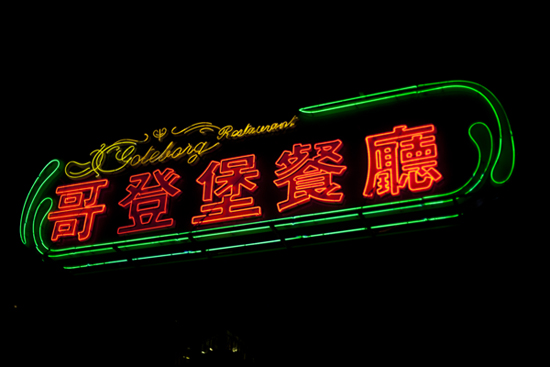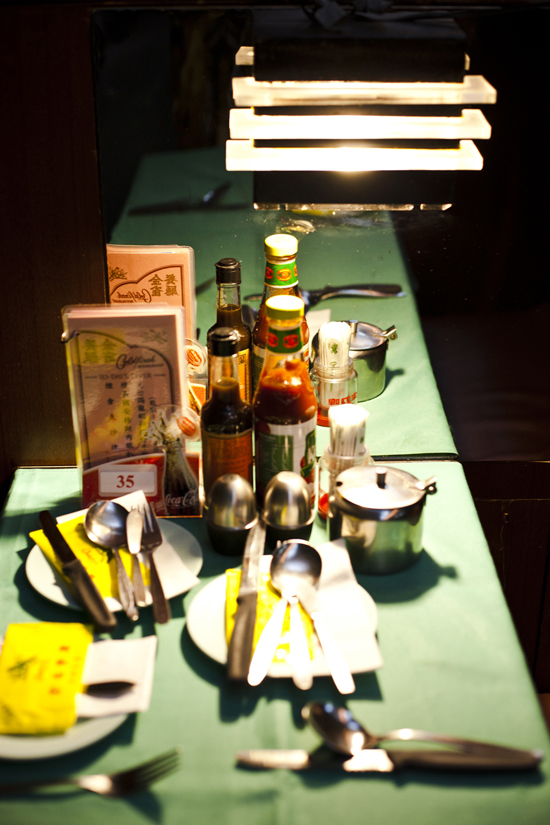The Soya Sauce Western Food Project
By Wendy Gan and Janny Leung
The rise of interdisciplinary and cultural studies in the Humanities has been quite a boon to those of us who have secret loves other than that of English language and literature. For sure, my colleague, Janny Leung, and I will always remain deeply devoted to the study of that honoured discipline that gives us a home at HKU, but there is room within academia these days for forays into new territory and one lunchtime in the Senior Common Room, Janny and I forged a pact to begin a new venture, unconnected to our own more mainstream lines of research: we decided to study the phenomenon of soya sauce western food in Hong Kong.
Was it a Senior Common Room beef stroganoff or an oxtail tagliatelle (not quite al dente but still good) that sparked the idea? I can’t remember what we ate that day, but we bonded over a conversation about Hong Kong’s unique interpretations of Western cuisine — the tomato-heavy, beetroot-light borsch soup, the sizzling steaks on iron hot plates, the ubiquitous black pepper sauce and, of course, the well-known story of Tai Ping Koon’s Swiss chicken wings that are not Swiss at all. As we talked we realized that here was a fascinating history that, if explored, could open up a greater understanding of Hong Kong’s interactions with the West. Such cross-cultural encounters have usually been studied in the form of Hong Kong’s legal and colonial legacies or through narratives of interracial relationships like in The World of Suzie Wong or Love is a Many Splendoured Thing, but to look at food would sidestep these well-trodden paths to explore East–West encounters in a new way — at the level of the everyday, where assimilations and fusions happen nonchalantly, unnoticed, at the level of one’s taste buds and stomachs.
The idea was too tempting and we bit. How could we resist a project that would involve eating borsch and black pepper steaks while digging into local history? Since then we have been visiting the remaining soya sauce Western restaurants in Hong Kong, observing their ambience and their presentation of the food, and interviewing a variety of patrons, catering staff and senior citizens — or anyone who might help give us a sense of what it was like to eat at a Western restaurant in the 50s and 60s when Western food was beginning to become part of a middle-class Hong Kong person’s way of life. We have also been busy examining old Chinese recipe books and attempting to talk to restaurant chefs to gain an understanding of the transmission of Western food in Guangzhou and Shanghai, and to see how recipes for borsch, for example, were transmitted and adapted by the local population. So far, we have come across Chan Wing’s cookbooks with his borsch recipes that call for the rather unorthodox additions of dried scallop (and even dried orange peel), and we are still on the lookout for more local recipes of this classic Eastern European soup.
There is still much work to be done to enable us to re-build that moment in Hong Kong history when the West, in the form of its cuisine, was translated and imbibed by locals. We have contacted the Heritage Museum and the History Museum, as well as some of the restaurants like Goldfinch and Queen’s Café, with varying levels of success. The difficulty with the research thus far is that we are tracing the history of an experience, and one that is so everyday and ephemeral that few have bothered to collect and record material and artifacts on it. We have encountered quite a few gaps, so if any reader of this article has photographs or menus of soy sauce restaurants from the 50s and 60s (or even earlier), old recipe books that contain recipes for borsch, black pepper sauce, pork chops, etc., or even if anyone has any memories of some of these restaurants and meals and would be interested in talking with us, we’d love to hear from you.
Drop us a line at soyasaucewestern@gmail.com


Wendy Gan is Associate Professor in the School of English, with an interest in early twentieth-century women’s writing, and feminist theory. Janny Leung is Assistant Professor in the School of English and specializes in the field of psycholinguistics and second language acquisition.

Our apologies, you must be logged in to post a comment.